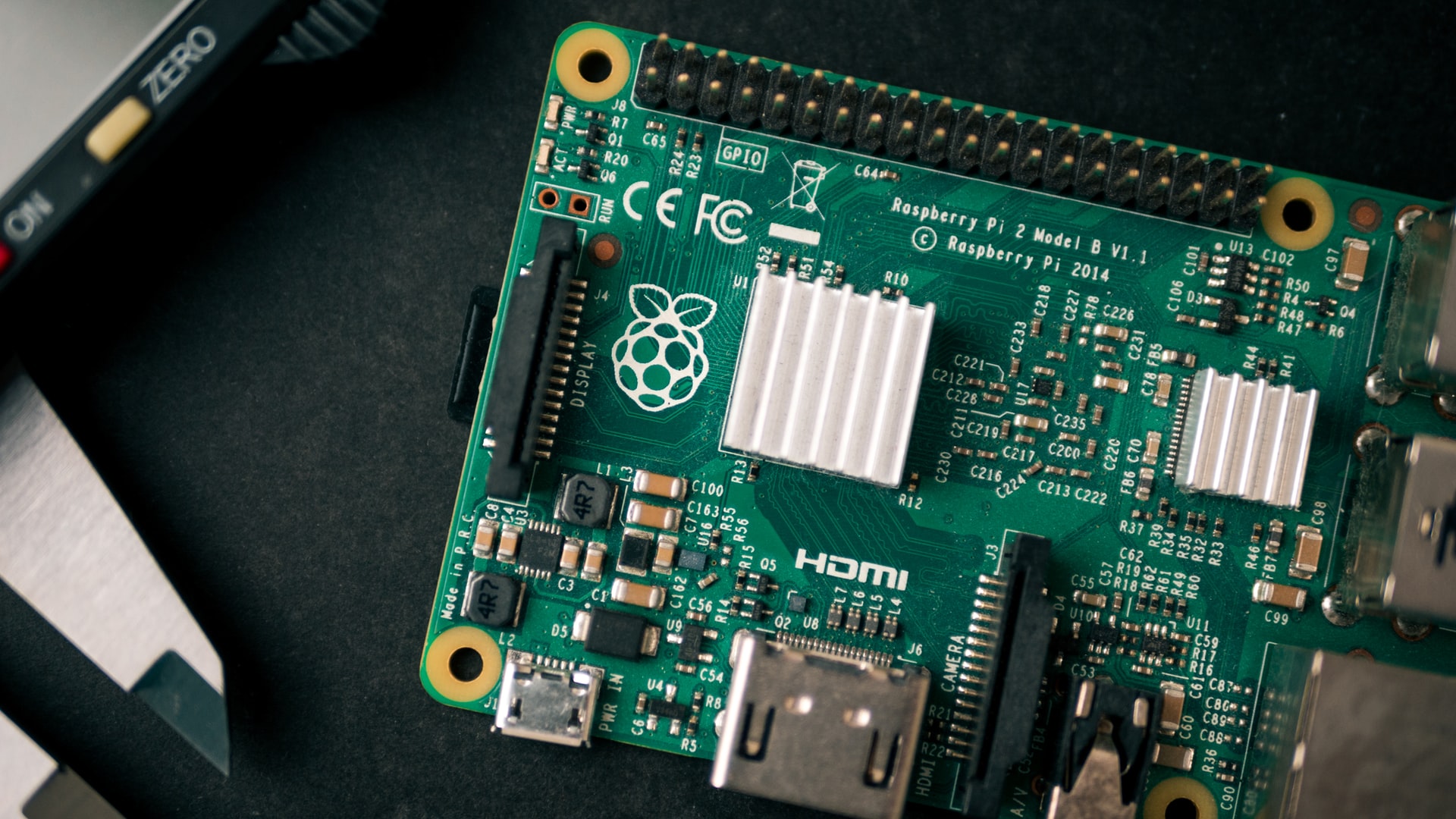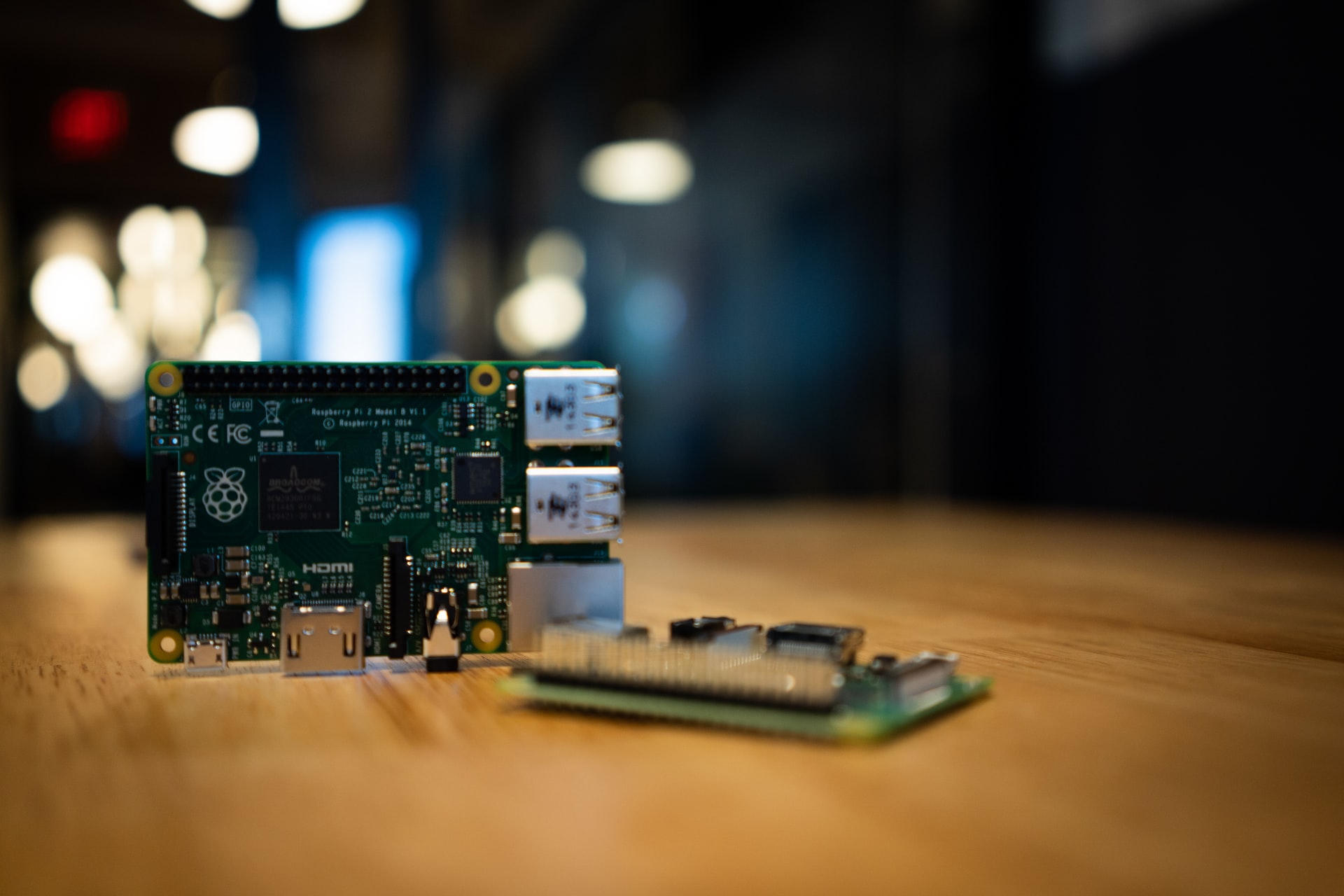The Raspberry Pi is an inexpensive, miniature computer, and since its conception, it has been used in countless robotics projects over the world. The Raspberry Pi is actually so small that the biggest model is as big as a deck of cards, and the smallest model is only a bit bigger than a stick of gum.
You might ask, how can something so tiny be a fully-fledged computer? The Raspberry Pi 1 Model A, the first model ever released, boased a Broadcom BCM2835 processor, a CPU, GPU, audio/video processing, with the CPU provided by a 700 Mhz single-core ARM processor. And that’s only their very first model. Since then, they’ve made even more improvements and updated their hardware.
All Raspberry Pi’s are single-board computers, but it’s important to emphasize that they’re probably not going to replace our current laptops and PCs anytime soon, nor are they aiming to. The Raspberry Pi is not a computer in the colloquial sense of the word, but it is an extremely versatile one that has been used extensively by programmers on many DIY projects, from emulating old video games to adding web-browsing capabilities to an old-school TV.

Its Original Purpose Was to Teach Kids How to Code
The Raspberry Pi was actually developed by the Raspberry Pi Foundation, a nonprofit that was founded in 2009 with the aim of helping anyone learn how to code. They believe that nowadays, we need more programmers than we’ve ever had, so it’s incredibly important to teach young people how to program without the monetary restrictions associated with learning this skill.
The Raspberry Pi is very small and portable, as well as inexpensive. You can plug it into any monitor, and use any keyboard and mouse to boot it up. For this reason, it has been used in many disadvantaged schools to teach children computer science and how to code.
The ease of access and simplicity of the Raspberry Pi is ideal for beginners who want to dip their toes into the programming world. It’s great for teaching people the basics of programming concepts, and beyond. The Raspberry Pi Foundation was also involved in a project which aimed to deliver this technology to children of poorer families during the pandemic, which left them unable to access education.
It Can Be Used in Countless DIY Robotics Projects
The Raspberry Pi has been used in countless robotics projects, including home automation, industrial automation, and use in commercial products. There really is a sea of options out there to be inspired by. As the people at raspians.com have proven the robotics community has come up with some awe-inspiring creations using the Raspberry Pi.
Just some of these crazy creations include a magic mirror, the universal ad-blocker called Pi-hole, a home-theater PC with HTPC streaming, facial recognition software, a WiFi extender, a robotic arm, and many, many more.
The Hardware
Not all Pi’s have the same hardware as there are 3 main versions of Raspberry Pi. Although they’re all ridiculously small, some have a few extra bells and whistles.
- Pi Zero
Raspberry Pi Zero is the smallest of the bunch, around 3 inches in length and only 1 inch in width. It boasts a Micro SD card, a mini HDMI port, a micro USB port, built-in Wifi/Bluetooth, and the power plug.
It actually needs a few extra adapters to hook it up to anything, but it’s great for small-scale projects and it’s ridiculously cheap at $5 (without WiFi) or $10 (with WiFi). The main trade off is that it has very little computing power.
- Model A Series
The Model A Series is pretty middle-of-the-road as far as Pi’s come. It’s faster than Pi Zero, but it has the same amount of memory. It boasts a full-sized USB port, an audio port, and a full-sized HDMI port. It also has built-in WiFi/Bluetooth. It’s good for small projects that need a little more extra power than what the Pi Zero can provide, but it costs $25.
- Model B Series
The Model B Series boasts the most features out of all the Pi’s. A Model B Series Pi has a USB port, Ethernet, up to 4 GB of memory, a quad-core processor, built-in WiFi/Bluetooth, and can even support dual monitors. These are actually better specs than even some laptops out there, and for only $35.
They also work on protecting their hardware the best way they can. By using FR-4 glass epoxy laminate for insulation, all Raspberry Pi’s protect their hardware from high voltages. They’re also made out of a small piece of flexible material that allows them to bend and move even though they’re tiny.
The Software
Though Windows OS and Mac OS dominate the operating system market nowadays, the Raspberry Pi runs a special version of Linux, called Raspberry Pi OS (formerly known as Raspbian). This operating system is perfectly optimized for these computers. It has a desktop environment and a cute custom theme, with shortcuts to Chromium, a file manager, and terminal.
You’ll Need a Few Extra Things to Get It to Work
The Raspberry Pi packs a substantial punch for the size that it is, but it’s impossible for it to have absolutely everything you need to make it fully operational. You’ll need a power source, most likely in the form of a micro USB-to-AC adapter. This is important because microcomputers like the Pi can easily malfunction if you plug them into the wrong type of charger. The Raspberry Pi Foundation also recommends a 4 GB Class 4 SD Card, at the bare minimum.
If your future projects include anything audio or video-related, you’ll need some audio and visual cables. If you’re connecting it to anything with HDMI support, you’ll need an HDMI cable. If you’re hooking up an older Pi to an analog TV, you’ll need an RCA cable.
Finally, you’ll need a regular mouse and keyboard, even if you don’t want to turn your Pi into a PC. Any standard USB mouse and keyboard can do the job. Although, always check your Pi’s specs before proceeding. Being well-informed about your technology is always a good thing.

The Raspberry Pi is a truly useful and versatile tool for anyone with even a passing interest in technology. There’s a lot of fun to be had with Pi’s, so feel free to explore and interact with the community. There is no shortage of resources and support, and everyone benefits from learning about this technology.





